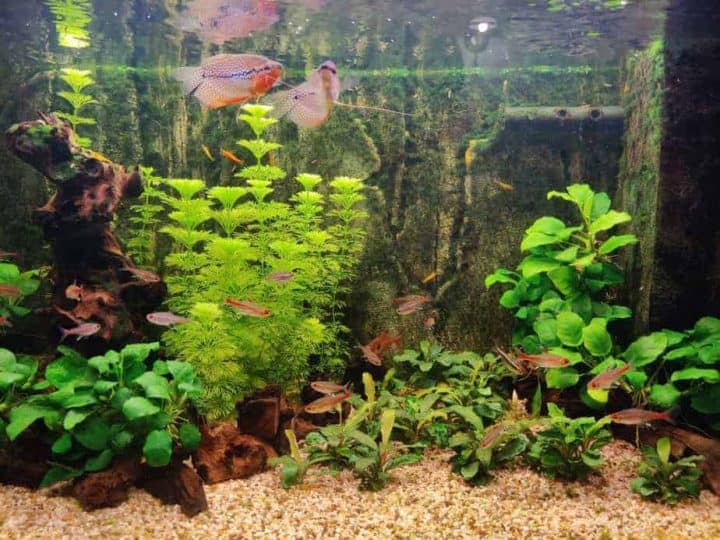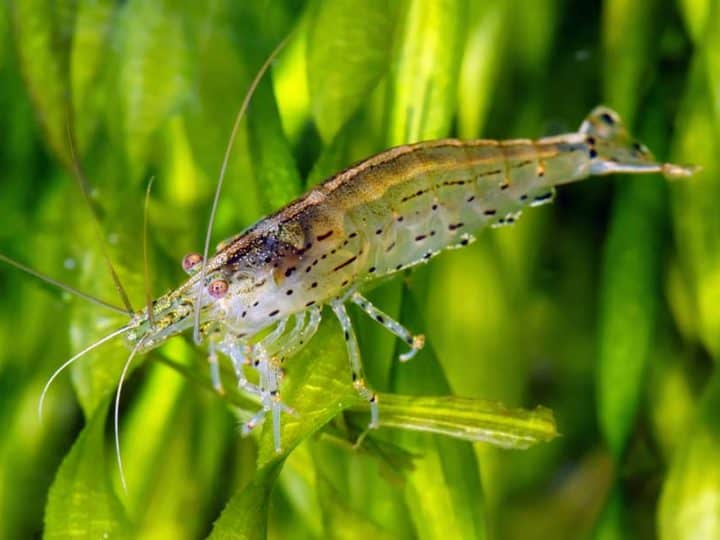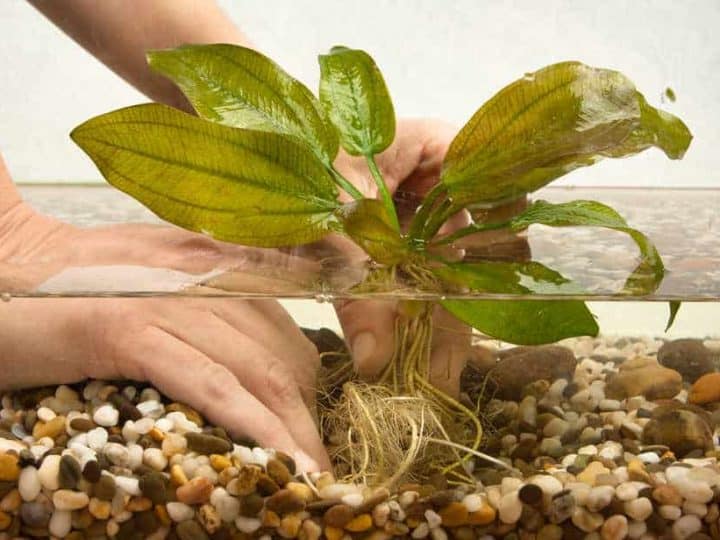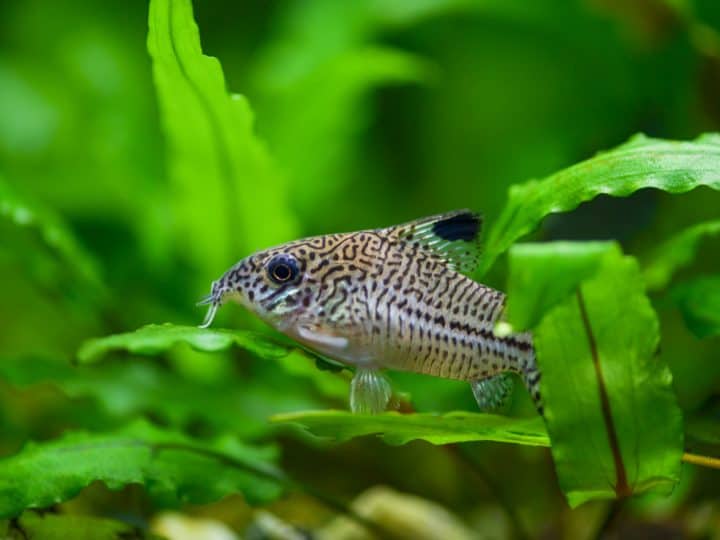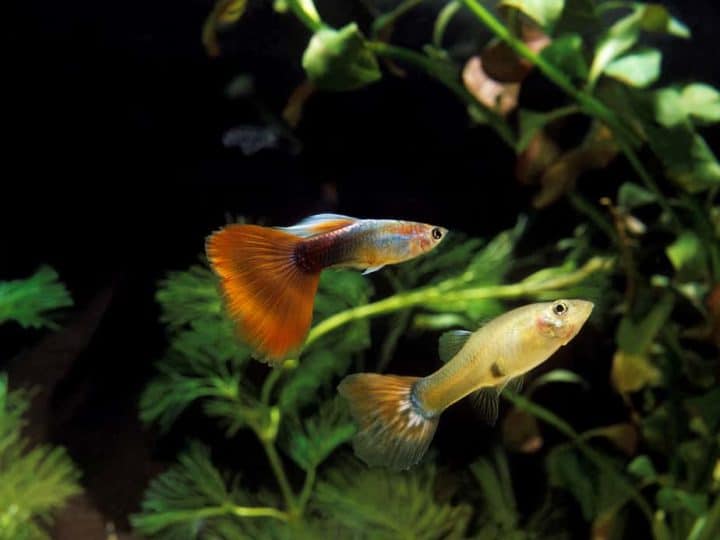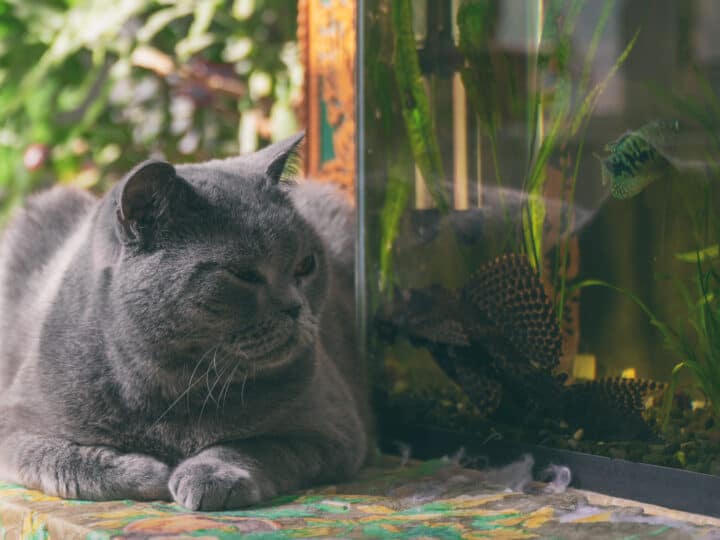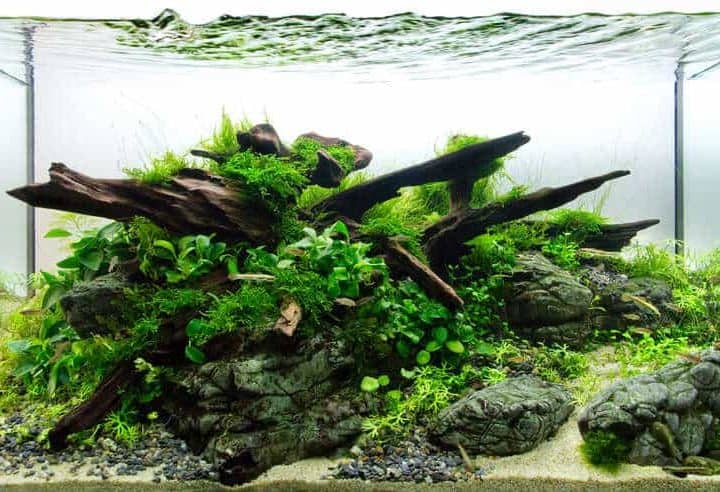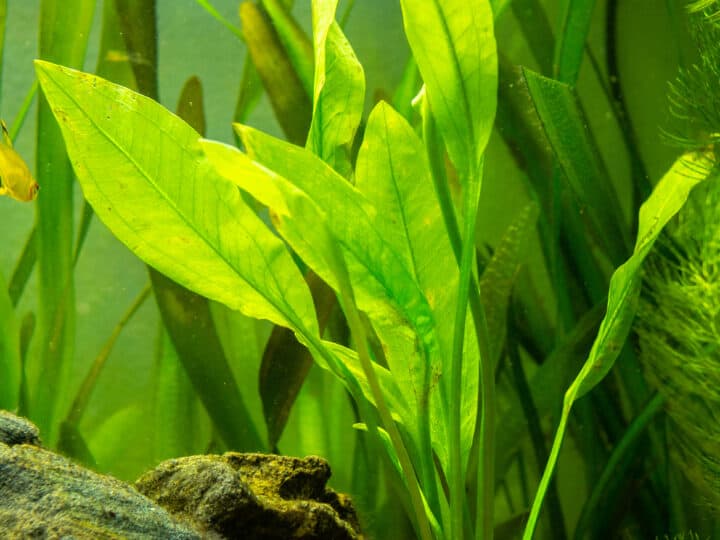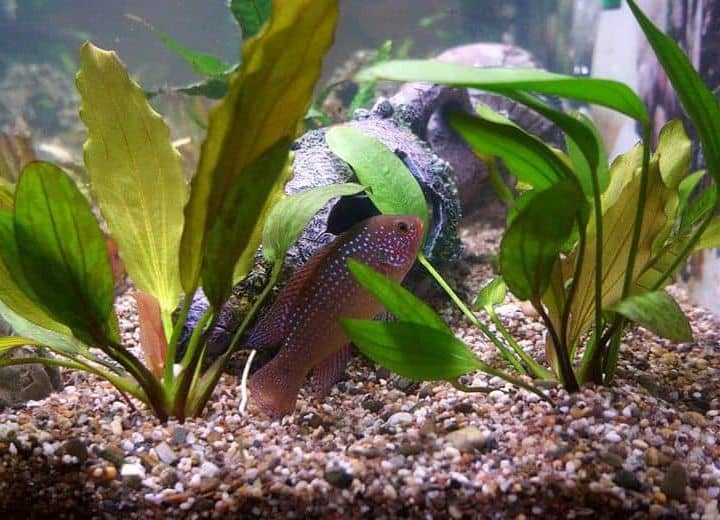If you are aspiring to set up a new aquarium, you must have struggled at some point as to which substrate you should pick for your tank. Suppose you have chosen sand, one of the most popular and readily available alternatives. You then find yourself faced with the question, “what type of sand is the best for plants?”
The best overall aquarium sand is Seachem’s Flourite Black Sand. The pros of this sand product strongly outweigh the few cons it has. It has a stunning appearance, and a premium feel while, at the same time, it’s not chemically coated and does not require replacement at all.
However, if you find yourself facing one of the following situations below, I would recommend these alternatives available on Amazon.com instead:
- When you are looking for a variety of colors, densities, and grain sizes to choose from. Go with Caribsea Super Naturals.
- When you are setting up an African Cichlid tank. Go with Caribsea Cichlid Mix.
- When you need live sand. Go with Stoney River Aquatic Sand.
- When you are searching for the most affordable option. Go with pool sands or the Black Diamond Blasting Sand.
In this article, I’ll first discuss with you the reason(s) why aquarium sand is suitable for live plants. I will also talk about a few related questions for those of you interested in the craft of aquascaping – read on to find out the best types of aquarium sand, their respective pros and cons, and whether your plants would prefer sand over gravel.
What Makes Aquarium Sand Suitable for Live Plants?
Aquarium sand is suitable for live plants because, when tightly packed, it does not need frequent changing. This means your plants aren’t disturbed as often as with gravel or soil. However, not all plants are suitable for a sand substrate, such as water lettuce, and others may need root tabs.
When I first walked into the store, I got confused and indecisive due to the sheer number of substrates I could choose from.
But in fact, there are only three major types of substrate: gravel, sand, and soil.
Let us briefly run over the respective characteristics of each type of substrate, and I’ll tell you what makes aquarium sand compatible with plants.
- Gravel. An aggregation of small stones and pebbles in varying sizes. It’s arguably the most popular substrate for freshwater aquariums due to its affordability and the realistic outlook it creates.
- Sand. Finer and cleaner when compared to gravel. It’s also a favorite among aquarium owners for cosmetic reasons – it closely mimics the natural habitat of aquatic animals.
- Soil. Usually comes in the form of softly baked granular balls. Perfect for plant growth as it’s filled with an ample amount of nutrients.
Gravel and sand are considered inert substrates; therefore, unlike soil which is known as “active substrates,” inert substrates will not alter water parameters in any significant manner.
In the same vein, these inert substrates may not be ideal for the growth of live plants because they often contain very few, if not none, of the essential nutrients.
That being said, I wouldn’t go as far as telling you not to use sand as a substrate for your planted aquarium. The sand substrate can be a superb option as it brings the following benefits:
- Affordable
- Inert in nature
- Easy to clean and does not require frequent replacement
- Adds to the natural accent of your tank (resembles lake and riverbeds).
If you’ve decided to use sand as a substrate, you’ll only need to tackle the issue where it can’t provide sufficient nutrients for the root feeders. I would therefore recommend adding some root tabs to the sand substrate to fertilize your live plants.
Note: You might also want to watch out for the potential issue of anaerobic pockets, often found in deep sand/gravel beds. Anaerobic pockets could be harmful to the habitat because it’s where denitrification occurs.
According to research done by the Division of Agricultural Sciences and Natural Resources of the Oklahoma State University (cited below), denitrification is when anaerobic bacteria break down nitrate and release nitrogen gas.
Occasionally, hydrogen sulfide (that is toxic to fish) will also be produced.
To prevent the above problem, be sure to:
- Introduce burrowing animals to the substrate, such as the Malaysian Trumpet Snails and blackworms;
- Limit the thickness of your substrate to not more than 2 inches (5.1 cm); and
- Not vacuum the sand bed, which may otherwise stir up the substrate and disrupt the existing bacteria population.
I’ve composed a list of plants that grow especially well with a sand substrate. Check it out here if you’re looking for inspiration!
Now that I’ve rested my case that sand is one of the best substrates you can ever get for your planted aquarium, let’s see what are among the best types of aquarium sand available on Amazon.com.
1. Flourite Black Sand
This black-colored sand from Seachem is, in my opinion, the best overall substrate you can obtain from Amazon.com, whether you’re a beginner hobbyist or a veteran aquarist.
The beauty of the Flourite Black Sand lies in the stunning and clean look it brings to your tank. At the same time, its best feature is perhaps convenience: you’ll never need to replace the substrate as it’ll not break down over time.
This product is also ideal for live plants, including rooted ones. The Flourite Black Sand is essentially an enhanced version of gravel; your plants can spread their roots wide across this porous substrate.
Pros
- Aesthetic – its black grains looks gorgeous and premium in a tank
- It doesn’t need replacement
- Suitable for rooted plants – not chemically coated
- Will not alter pH of the water
Cons
- High density and sharp-edged which might harm plant roots in the initial process of planting
- May cloud the tank unless thoroughly rinsed beforehand
- Price is on the higher end of the spectrum
2. Caribsea Super Naturals
Caribsea’s Super Naturals is exotic-looking, easy to maintain, and features soft and fine grains which prevent detritus from building up in your tank.
Furthermore, the sand is nature-colored (untreated with paints and dyes), which imitates the natural terrain of your aquarium inhabitants – from the breathtaking sceneries of Rio Negro, Sri Lankan rivers to tropical islands.
The inert and stable nature of the sand means it’ll not impact the pH level of your tank. Based on the reviews on Amazon.com, the Super Naturals sand will not cause clouding of the water.
However, some reviewers have reported that the extra-fine grain may mess up with the filters and pumps. In addition, I notice that some of the variants of the Super Natural line have larger grain sizes (for instance, Peace River and Crystal River).
Therefore, I advise you to look into all the different variants from the CaribSea website before purchasing.
Pros
- Natural-looking comes in many different colors, grain size, and density
- Easy to maintain – fine grains prevent the collection of waste at the bottom of your tank
- pH-neutral, suitable for freshwater tanks
- Will not cloud your water
Cons
- Might get sucked up and jam the filters or pumps (if you choose to purchase the variant with a smaller grain size)
- Price is on the higher end of the spectrum
3. Caribsea Cichlid Mix
An excellent product offered by CaribSea, the Cichlid Mix is specifically designed to replicate the natural African Cichlid environments.
I always loved how eye-catching the black and white sand is; the substrate offers excellent color contrast and, therefore, is perfect for your tank, especially if you take a fancy of the desert view.
However, this product can be a bit of a hit-or-miss if you’re a beginner aquarium owner.
On the one hand, the African Cichlid Mix is suitable for living organisms – African cichlids and aquatic plants both. The US-made substrate also buffers the water, increasing the pH to imitate the cichlid’s living ground at the East African Rift Lakes.
That being said, the pH level may not be ideal for some fishes such as guppies and oscar fish. Before purchasing the African Cichlid Mix, I suggest that you do some simple research on what water pH your aquarium dwellers would thrive in.
Pros
- Beautiful black and white combination
- Perfect for a cichlid tank – buffers the water to a higher pH level
- Will reduce the chance of detritus building up
Cons
- Might not be compatible with fish unable to withstand a high pH environment
- Needs thorough rinsing – might contain gravel
4. Stoney River Aquatic Sand
The Stoney River Aquatic Sand, manufactured by the brand Estes, is safe for use in both freshwater and marine aquariums.
The fine-grained sand is bright white in color, features a non-toxic coating, and will not buffer the pH and chemistry of your tank.
I can see why many people favor this product: the Stoney River Aquatic Sand is essentially biologically active “live sand.”
This means that various types of bacteria and invertebrates have colonized the sand – you might even find micro-fauna and many other microscopic organisms within!
This sand could be an initial “booster” for those looking to set up a new saltwater tank – it immediately makes the aquarium more hospitable to fishes and plants and adds biodiversity to the sand bed.
Nonetheless, you should know that even if you decide to go with regular dry sands, they’ll eventually become “live” given enough time.
As such, the fact that the Stoney River Aquatic Sand is live sand alone might not be persuasive enough for some to buy it, particularly since it’s priced higher than most regular dry sand products.
Pros
- Naturally gleaming white grains
- Biologically active live sand
- It doesn’t alter the pH and chemistry of the water
- Suitable for both fresh and saltwater tanks, especially the latter
Cons
- Pricier than regular dry sands
- Requires thorough rinsing – otherwise could be very dusty
- Fine-grain size may potentially be caught up in your filters and pump
5. Pool Sand or Black Diamond Blasting Sand
Though the pool sand and the Black Diamond Blasting Sand are not initially designated for aquarium use, what stops you from using them as the substrate for your tank?
There can be a lot of benefits to using these two types of sand as a substrate. Most importantly, they are significantly cheaper than all of the products discussed in the above paragraphs.
Pool filter sand can be an excellent addition to your tank due to its density, which means it’ll not get caught by your water filters. Some people might also dig its coarse texture or the aesthetic of the white or beige color of pool sands.
This Black Diamond Blasting Sand (available at Amazon) could offer the best bang for your buck among all the sand products I’ve ever seen. Despite its low price, it still delivers a premium appearance, just like the branded aquarium sands.
However, these two types of sand have a few traits that make them fall behind compared to the more popular specialty sand.
For instance, they might not be easily accessible in your local stores, and they could be very dusty, which requires heavy rinsing before putting them in your tank.
Pros
- Very affordable
- Attractive appearance
- Will not alter the parameters of the water
Cons
- Might not be available in your locality – very location-dependent
- Need to look out for sharp edges that may harm your aquarium inhabitants
Is Sand Good for Aquarium Plants?
Sand is good for aquarium plants because it provides an excellent anchoring substrate. This makes it especially good for water-feeding plants. However, because sand is an inert substrate, heavy root-feeders will require regular feeding with root tabs.
Do Aquarium Plants Grow Better in Sand or in Gravel?
Having discussed the respective pros and cons of each type of aquarium sand, I’m left with one final question: why should you pick sand when you could have chosen gravel?
Both sand and gravel are natural and could therefore be a close replica of the natural habitat of your aquarium dwellers.
The answer to this question hinges upon one factor – the most conducive substrate for the growth of your live plants will rightfully take the crown.
Hardy plants like Vallisneria and Java Ferns will grow well in a sand substrate, where plants that require more room to grow, like Amazon Sword or Madagascar Lace, will thrive in a gravel substrate.
Different plants will have different preferences as to a gravel or sand substrate. So it’s best to do your research before making any purchases.
For example, the Anubias Barteri (pictured below) is a popular and adaptable plant that will happily grow in gravel.
However, keep in mind that gravel offers no nutrients for your plants, so you may need to include a layer of soil, or use a liquid fertilizer weekly.
Seachem’s Flourite Black Sand combines many of the best features of sand and gravel and should be an excellent choice for almost any plant.
Examples of plants that’ll thrive in the sand substrate are Cryptocoryne wendtii and Ludwigia repens. Conversely, some plants might find it very difficult to root in fine grains of sand and will do better in gravel.
In short, I would advise you to carry out independent research based on the type of aquarium plants you are hoping to add to your tank.
Key Takeaways
After carefully comparing the sand products above, I would still recommend Seachem’s Flourite Black Sand as the best aquarium sand for planted tanks.
The only downside of using Flourite Black Sand (also the common drawback for all sand substrates) is that it will not supply enough nutrients for your live plants. As discussed in the above paragraph, you can solve this problem by adding root tabs into the substrate.
Sources
- Buce Plant: Planted Aquarium Substrate: Soil, Gravel, and Sand
- Aquarium Co-op: How to Pick the Best Substrate for a Freshwater Planted Aquarium
- Aquarium Tales: How to Use Root Tabs for Aquarium (Get Explosive Plant Growth in Aquarium)
- Fishlore: A – Aquarium Glossary and Fish Dictionary
- Rakocy, J., Masser, M.P. and Losordo, T., (2016). Recirculating aquaculture tank production systems: aquaponics-integrating fish and plant culture.
- Aquaworld Aquarium: Anaerobic Bacteria in Freshwater Aquariums
- CaribSea: Aquarium
- The Spruce Pets: How to Use Live Sand in Your Saltwater Aquarium

